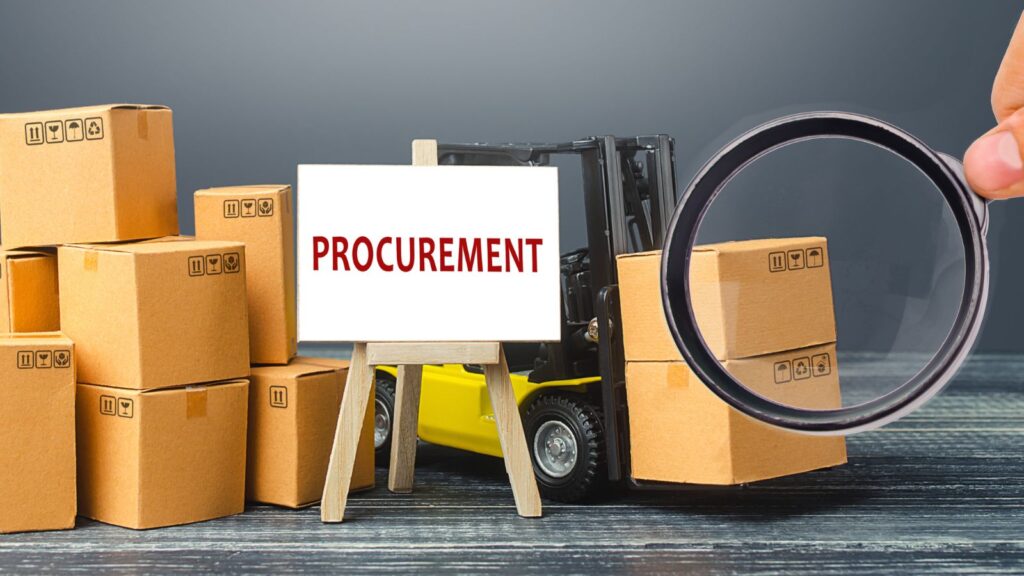
Procurement mistakes are signals that something in the process isn’t working as it should. Maybe an order takes too long to approve, budgets don’t align across teams, or data gets lost between systems. Whatever the case, these challenges usually point to bigger issues, not individual slip-ups. The upside is that every mistake exposes an opportunity to simplify, automate, and make purchasing smoother and more transparent.
Common procurement issues and practical fixes
Even the best procurement systems can fall short when processes become fragmented, outdated, or overly focused on the wrong priorities. Here are some of the most common challenges organizations face and practical steps to solve them.
Disconnected Teams and Tools
Procurement, finance, operations, and accounts payable often operate in silos, each using its own systems, metrics, and workflows. While this might work short-term, it often leads to duplicate purchases and mismatched data. Think of it as trying to complete a puzzle when each team holds different pieces that never come together.
How to fix it:
● Form cross-functional teams for major categories or projects.
● For recurring orders, use a PunchOut catalog to give teams real-time access to inventory and pricing.
● Centralize purchasing data to ensure everyone works with the same information.
Rushing Into AI Adoption
Artificial intelligence offers huge potential for procurement efficiency, but jumping in without a plan can backfire. Implementing automation on top of messy, inconsistent data or without a clear purpose wastes time and can create “AI debt”—built-up errors and inefficiencies that make AI systems harder and costlier to maintain.
How to fix it:
● Begin with clear, focused use cases like data entry or document matching.
● Establish baseline KPIs and track improvements.
● Clean your data first: accurate and complete data matters more than deploying AI everywhere.
Doing Everything In-House
Handling every procurement activity internally might feel safer, but it can stretch teams too thin and limit access to specialized expertise. When staff are buried in administrative work, they can’t focus on the high-value tasks that actually drive growth.
How to fix it:
● Hand over high-effort, low-risk tasks to outsourcing, such as spend analysis or data entry.
● Set clear guidelines for data security and decision-making.
● Scale gradually and expand as results demonstrate success.
Focusing on the Cost Alone
It’s tempting to equate “lowest cost” with “best deal,” but that mindset can easily lead to long-term losses. A cheap supplier might cut corners, deliver inconsistent quality, or fail to meet deadlines, all of which end up costing more in the end.
How to fix it:
● Evaluate Total Cost of Ownership (TCO), including maintenance, logistics, and risk costs.
● Review the historical performance of “cheapest” versus “best-value” suppliers.
● Prioritize and reward reliability and results, not just low prices.
Weak Supplier Due Diligence
Skipping thorough supplier vetting is one of the riskiest procurement mistakes. Without proper checks, you could partner with a financially unstable company or one that lacks compliance and continuity plans. One weak link can disrupt your entire supply chain.
How to fix it:
● Make continuity and risk plans part of onboarding.
● Review financial health, reputation, and regulatory history.
● Re-assess regularly, especially for critical or single-source suppliers.
Why Procurement Issues Persist
Errors rarely appear out of nowhere. When you look closely, most follow familiar patterns that point to weaknesses in structure, habits, or company mindset. Understanding them is the first step toward breaking the cycle.
No clear ownership
When nobody truly “owns” the procurement process, accountability quickly slips through the cracks. One department might approve purchases differently from another, invoices may not line up with orders, and no one has a full view of the entire purchasing journey. Without clear roles and responsibilities, even small decisions become bottlenecks.
Manual-heavy, outdated routines
Email chains and spreadsheets can feel comfortable and familiar, but they’re also a breeding ground for mistakes. At first, managing a few purchases this way seems manageable. However, as orders increase, manual processes become a liability. What once felt efficient turns into a slow, error-prone system that drains time and energy from the team.
External shocks
Some challenges simply come from outside the organization. Supply shortages, changing regulations, or global disruptions can throw even the most efficient procurement system off balance. When processes are too rigid or dependent on manual coordination, these shocks hit harder. Flexibility becomes the difference between a temporary setback and a full-blown operational crisis.
Reactive purchasing
Many procurement teams operate in “crisis mode” and step in only when something goes wrong. This reactive approach may keep things moving day to day, but it prevents long-term improvement. When all efforts go toward putting out fires, there’s little time left to anticipate risks or identify early warning signs that could stop problems before they happen.
Talent gaps
Procurement is evolving rapidly, yet not every organization has kept pace in terms of talent and expertise. When teams lack professionals who can interpret data, negotiate strategically, or manage supplier relationships, the entire function risks becoming purely administrative. Instead of working on strategy, staff end up buried in routine approvals and paperwork.
How to respond to procurement issues
Mistakes will happen. What matters is how you respond. When something goes wrong, act fast to contain the damage. Pause the PO, shipment, or payment, and alert the supplier if needed. Document the incident, then assess the consequences: money at risk, delays, compliance issues, and affected stakeholders. Share a brief, factual update outlining what happened, its scope, and the immediate response.
Correct and reconcile documents, budgets, and records, renegotiating if necessary. Once stable, find the root cause: map the process, review data, and identify patterns. Prioritize fixes with the biggest payoff, such as policy updates, added security checks, or automation, then refresh your guidelines, train the team, and monitor to ensure the issue doesn’t happen again.
Final takeaways
You can’t eliminate every procurement error, but you can make them smaller, rarer, and less expensive. Treat each one as feedback about the system. With clear ownership, connected workflows, and well-paced automation, mistakes become signals for continuous improvement.










